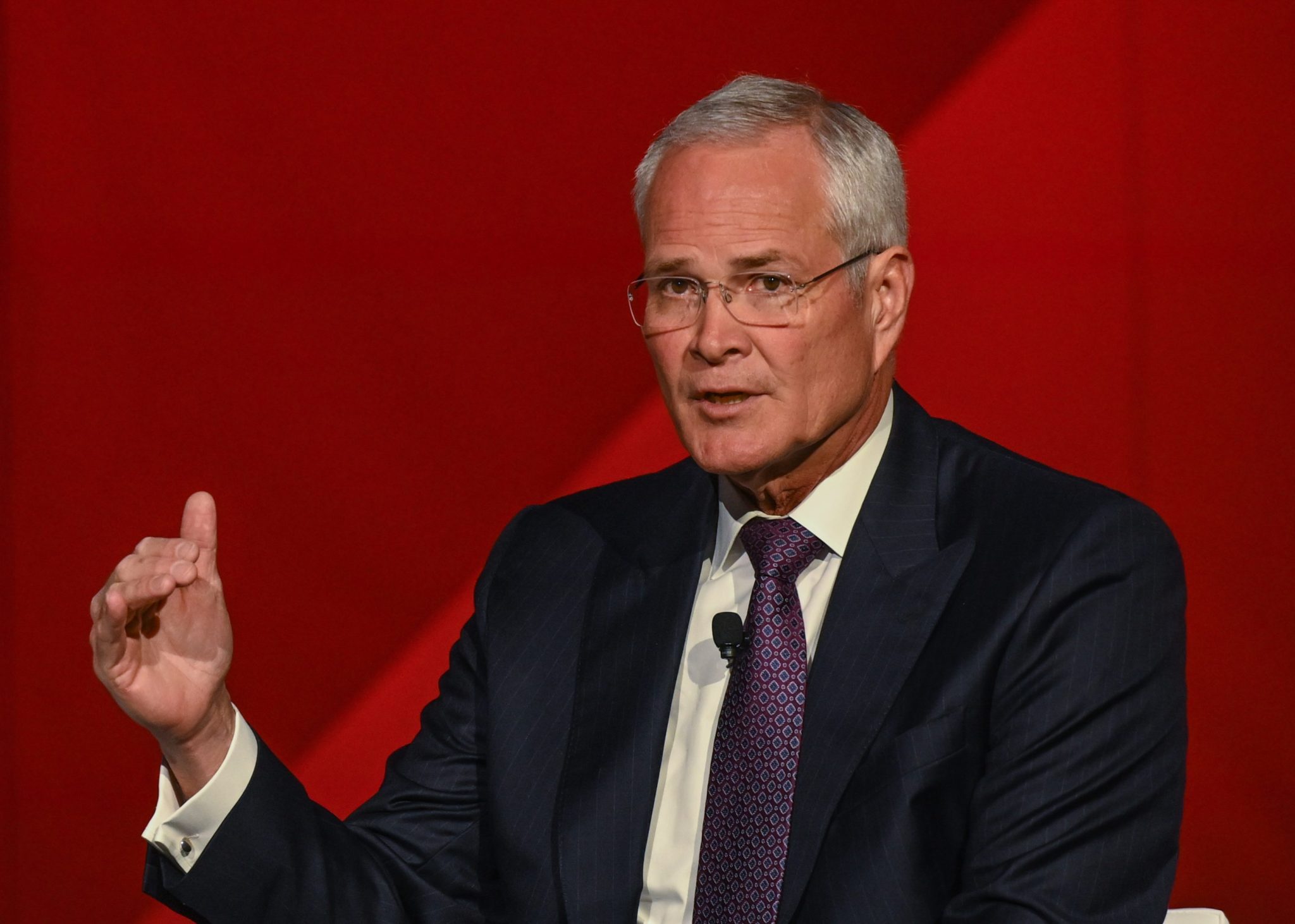Business
Big Oil Boosts Production Amid Global Oversupply Concerns

Major oil companies, including Exxon Mobil, Chevron, and Shell, are increasing crude oil production despite a growing global oversupply. This trend raises questions about the sustainability of prices as the Organization of the Petroleum Exporting Countries (OPEC) continues to boost exports. The U.S. benchmark price is currently hovering near $60 per barrel, a level that challenges profitability for many producers.
The largest American oil producers, Exxon and Chevron, are focusing on the prolific Permian Basin in West Texas, where production remains robust. Exxon reported record production of 1.7 million barrels of oil equivalent per day in the third quarter, including natural gas, while Chevron achieved 1.06 million barrels daily. During a recent earnings call, Exxon Chairman and CEO Darren Woods emphasized their commitment to growth, stating, “We set yet another production record.” He expressed confidence in the Permian’s potential to drive production increases well into the next decade.
Exxon’s overall output rose from 4.63 million barrels of oil equivalent daily in the second quarter to 4.77 million barrels in the third. Looking ahead, the company aims to reach 5.4 million barrels by 2030, largely due to developments in the Permian and offshore projects in Guyana. Chevron, while actively reducing its capital expenditure in the Permian, still managed to increase production by almost 60,000 barrels daily from the previous quarter. Chevron Chairman and CEO Mike Wirth noted the efficiency gains achieved with fewer drilling rigs.
Despite these production increases, the oil market faces significant headwinds. OPEC, led by Saudi Arabia, is gradually unwinding years of production cuts designed to support prices. This decision reflects a desire to regain market share while accommodating geopolitical pressures, including those from the United States. Wirth remarked on the “headwinds on the supply-demand fundamentals going into 2026,” indicating a potential oversupply scenario.
U.S. oil production has surged to over 13.6 million barrels per day, contributing to downward pressure on prices. Although production remains steady, the industry anticipates that reduced drilling activity might change this trend in the coming year. Wirth pointed out that smaller operators might face more significant financial challenges compared to larger companies like Chevron, which are better equipped to navigate fluctuating market dynamics.
Shifting Focus to Frontier Exploration
As the U.S. shale boom matures, major oil producers are pivoting away from solely focusing on domestic onshore fields. Companies are increasingly allocating funds to international offshore exploration in regions such as South America and Africa. This strategic shift reflects a recognition that U.S. shale wells often exhibit rapid depletion rates.
Woods commented on the need for long-term investments, stating, “With the [U.S. shale] depletion curve, the industry has to continue to think long term.” He noted that a focus on longer-cycle projects is essential for sustained production. Similarly, Wirth acknowledged the necessity of balancing exploration efforts and highlighted initiatives in countries like Suriname, Brazil, Angola, Nigeria, Namibia, and the Middle East.
Despite the challenges posed by lower commodity prices, major oil companies are still reporting strong profitability. Exxon recorded a net income of $7.55 billion for the quarter, down from $8.61 billion year over year. Chevron’s net profit was $3.54 billion, also down from $4.49 billion, primarily due to lower prices. Conversely, Shell’s net income increased to $5.32 billion, up from $4.29 billion, although adjusted earnings saw a dip.
The strategic decisions by these major oil players may indicate a shift in how the industry responds to evolving market dynamics and the ongoing quest for profitability amidst a complex global landscape.
-

 Science2 weeks ago
Science2 weeks agoIROS 2025 to Showcase Cutting-Edge Robotics Innovations in China
-

 Politics2 weeks ago
Politics2 weeks agoJudge Considers Dismissal of Chelsea Housing Case Citing AI Flaws
-

 World3 weeks ago
World3 weeks agoBravo Company Veterans Honored with Bronze Medals After 56 Years
-

 Lifestyle2 weeks ago
Lifestyle2 weeks agoStone Island’s Logo Worn by Extremists Sparks Brand Dilemma
-

 Health2 weeks ago
Health2 weeks agoStartup Liberate Bio Secures $31 Million for Next-Gen Therapies
-

 Health3 weeks ago
Health3 weeks agoTop Hyaluronic Acid Serums for Radiant Skin in 2025
-

 Top Stories2 weeks ago
Top Stories2 weeks agoIndonesia Suspends 27,000 Bank Accounts in Online Gambling Crackdown
-

 World2 weeks ago
World2 weeks agoHoneywell Predicts Record Demand for Business Jets Over Next Decade
-

 Sports3 weeks ago
Sports3 weeks agoMel Kiper Jr. Reveals Top 25 Prospects for 2026 NFL Draft
-

 Lifestyle3 weeks ago
Lifestyle3 weeks agoMary Morgan Jackson Crowned Little Miss National Peanut Festival 2025
-

 Sports3 weeks ago
Sports3 weeks agoYamamoto’s Mastery Leads Dodgers to 5-1 Victory in NLCS Game 2
-

 Politics3 weeks ago
Politics3 weeks agoNew Jersey Voters Urged to Register Ahead of November Election









